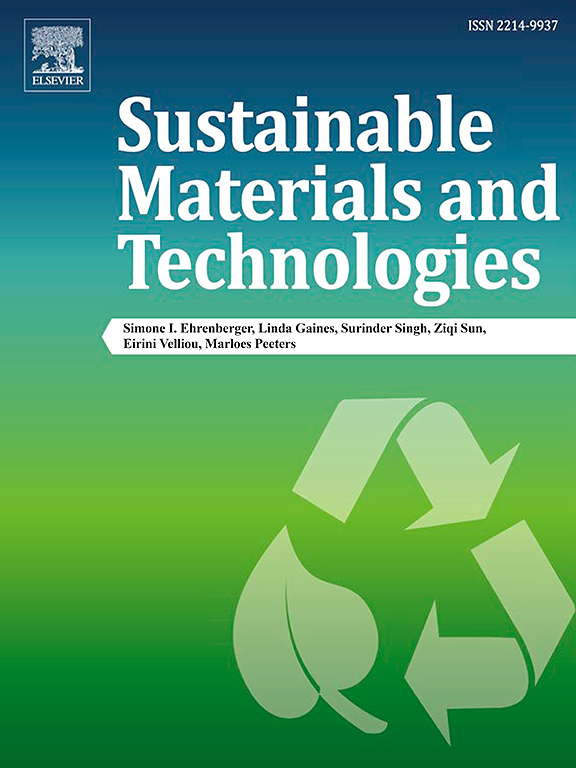Development of sustainable aluminum alloy‑tungsten carbide hybrid composites using industrial waste - An experimental analysis
IF 8.6
2区 工程技术
Q1 ENERGY & FUELS
引用次数: 0
Abstract
The research article focuses on the development of aluminum alloy 6061 sustainable composites with the utilization of industrial waste through the use of the stir casting process. Recycling industrial waste is essential for reducing environmental impact. Thus, the red mud waste came from the aluminum production process, which was considered for producing sustainable metal matrix composites (MMCs). Also, tungsten carbide (WC) microparticles have been used to develop hybrid aluminum composite materials. The concentrations of red mud and tungsten carbide were 2 wt%, 4 wt%, and 6 wt%, respectively, and were used to achieve the desired strength performance of aluminum metal matrix composites. The elemental and bonding analyses of hybrid composites were analyzed using X-ray Diffraction (XRD) and Fourier Transform Infrared Spectroscopy (FTIR) analysis. Mechanical characterizations of aluminum hybrid sustainable composites were also investigated, including tensile, compression, and microhardness testing. The results show that increasing reinforcement by up to 4 wt% increases the mechanical strength of aluminum alloy composites. The tensile, compression, and microhardness of metal matrix composites are increased by 25.24 %, 40.2 %, and 20.6 %, respectively, as compared to the aluminum alloy 6061 alloy. The surface morphology of metal matrix composites was analyzed by utilizing Field emission scanning electron microscopy. The proposed sustainable aluminum composites have the potential to develop structural and automotive components due to their higher strength-to-weight ratio.
利用工业废料开发可持续铝合金-碳化钨混合复合材料--实验分析
研究文章的重点是通过使用搅拌铸造工艺,利用工业废料开发铝合金 6061 可持续复合材料。回收利用工业废物对减少环境影响至关重要。因此,我们考虑利用铝生产过程中产生的赤泥废料来生产可持续金属基复合材料(MMC)。此外,碳化钨(WC)微粒也被用于开发混合铝复合材料。赤泥和碳化钨的浓度分别为 2 wt%、4 wt% 和 6 wt%,用于实现铝金属基复合材料所需的强度性能。利用 X 射线衍射(XRD)和傅立叶变换红外光谱(FTIR)分析了混合复合材料的元素和结合分析。此外,还研究了铝混合可持续复合材料的力学特性,包括拉伸、压缩和微硬度测试。结果表明,增加 4 wt% 的增强量可提高铝合金复合材料的机械强度。与铝合金 6061 相比,金属基复合材料的拉伸强度、压缩强度和显微硬度分别提高了 25.24%、40.2% 和 20.6%。利用场发射扫描电子显微镜分析了金属基复合材料的表面形态。所提出的可持续铝复合材料具有更高的强度重量比,因此具有开发结构和汽车部件的潜力。
本文章由计算机程序翻译,如有差异,请以英文原文为准。
求助全文
约1分钟内获得全文
求助全文
来源期刊

Sustainable Materials and Technologies
Energy-Renewable Energy, Sustainability and the Environment
CiteScore
13.40
自引率
4.20%
发文量
158
审稿时长
45 days
期刊介绍:
Sustainable Materials and Technologies (SM&T), an international, cross-disciplinary, fully open access journal published by Elsevier, focuses on original full-length research articles and reviews. It covers applied or fundamental science of nano-, micro-, meso-, and macro-scale aspects of materials and technologies for sustainable development. SM&T gives special attention to contributions that bridge the knowledge gap between materials and system designs.
 求助内容:
求助内容: 应助结果提醒方式:
应助结果提醒方式:


